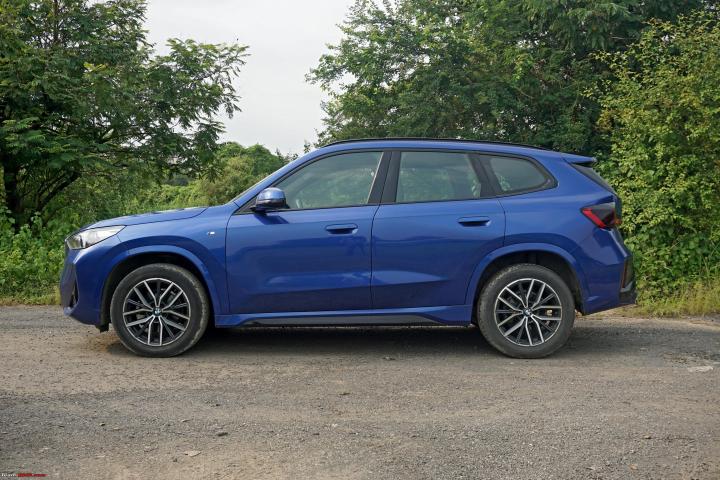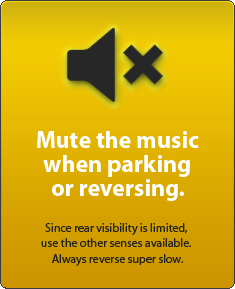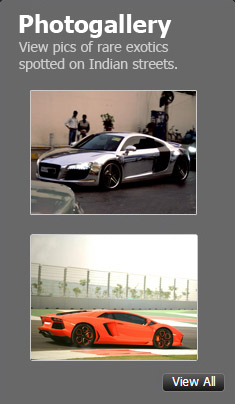News
2023 BMW X1 : Our observations after 5 days of driving
The X1, despite shifting to front-wheel drive, handles like a BMW should - i.e. beautifully. On sweeping curves, the car holds its line very well. Push it hard on twisty roads and the car changes direction without drama.
Driving the BMW X1 2.0L Diesel AT
The X1 is available with 2 engine options - a 134 BHP, 1.5L, 3-cylinder turbo-petrol and a 148 BHP, 2.0L, 4-cylinder turbo-diesel. The turbo-petrol is a disappointment as at this price point, one would expect a more refined and powerful motor. On paper, the turbo-diesel too looks disappointing as it produces just 148 BHP and 360 Nm, which is considerably lower than the second-gen car (188 BHP & 400 Nm). Both engines come mated to a 7-speed dual-clutch transmission. We got to drive the diesel (sDrive 18d M Sport).
1,995 cc TwinPower turbo-diesel unit makes 148 BHP & 360 Nm:
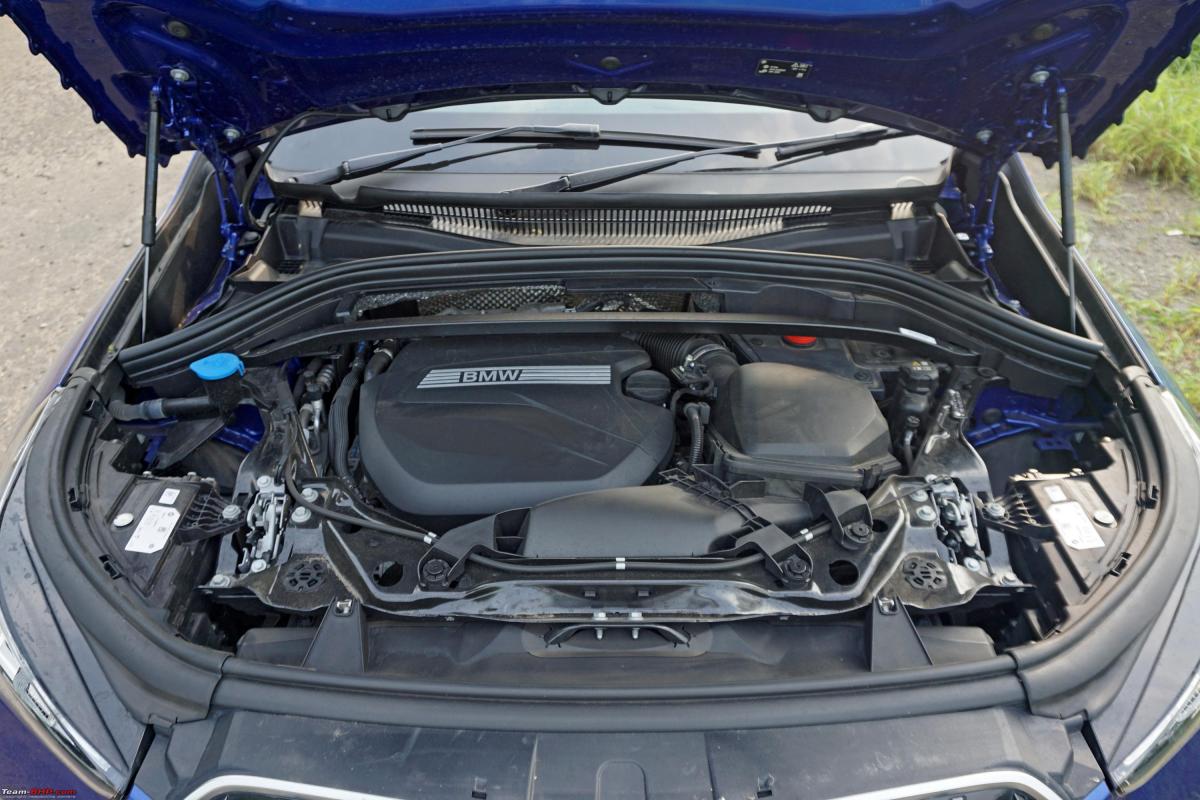
With your foot on the brake, press the engine start / stop button to fire up the engine. Immediately you'll notice the impressive refinement of the car. There is barely any noise or vibration felt upon starting or at idle.
Release the brakes and the X1 starts crawling forward at 6 km/h in silence. Very frankly we don’t know how BMW tunes its engine and gearboxes. The car is peppy enough at city and medium speeds. The engine is responsive at low speeds and there is enough power and torque available to help you keep up with city traffic. Even when you need to close a gap to the car in front, the engine has enough poke. You’ll never feel a lack of power. Overall drivability is very good with linear power delivery. The diesel's refinement is quite impressive. Along with the good drivability, it makes for a very smooth and comfortable experience in urban conditions.
On the open road, the X1 is an adequate performer. While we wouldn't call it exciting, it's more than enough for Indian roads and most owners' needs. BMW claims that the diesel can touch 100 km/h from a standstill in 8.9 seconds. Despite the rather low power and torque figures, we never felt the car to be underpowered. The mid-range is strong and the throttle response is good which makes overtaking easy. The engine revs till ~4,500 rpm before shifting up. In terms of cruisability, in 7th gear, the engine is revving at ~1,500 rpm and ~1,800 rpm while doing 100 km/h and 120 km/h respectively. This makes the X1 an effortless mile-muncher.
The 7-speed Steptronic dual-clutch AT does a very good job in the X1. With a light foot, you can see upshifts happening at ~1,750 rpm. It is very smooth while shifting up or down and also nice and quick in its response time. It never seems confused and is almost always in the correct gear that one would need. Paddle shifters have been provided for those who want to shift manually. The party piece here is the boost mode. This is engaged by keeping the downshift paddle pulled for a few seconds. The engine gives you around 10 seconds of extra power to overtake traffic quickly - very handy while driving on single-lane highways.
Apart from the default Personal mode, there are 2 drive modes: Efficient and Sport. These 2 modes alter the nature of the engine.
The Personal mode is in the middle of the Efficient and Sport modes. It works well in town and on the highway and offers a good balance between efficiency and performance.
In Efficient mode, the throttle response is lazier and the gearbox shifts up earlier to maximise fuel efficiency. This mode provides the smoothest ride. It is good enough to be used in the city, but on the highway, it makes the car feel underpowered.
In Sport mode, the throttle response is sharpened and gearshifts are snappier. The transmission holds a gear for a longer time. This mode is helpful while pulling off quick overtaking manoeuvres on the highway. However, using this mode in the city is not advisable as power delivery can get spiky.
Noise, Vibration & Harshness (NVH)
As mentioned earlier the 2.0L diesel is extremely refined. There is barely any noise or vibration experienced as the engine cranks or when idling. Even while driving around, the engine is hardly heard in the cabin. It's only when you rev past ~2,500 rpm that there is some engine noise heard in the cabin. Go past ~3,500 rpm and the noise gets louder, but it's never disturbing for the car's occupants.
Wind noise and road noise are well controlled for the most part. Above 115 km/h, however, some wind noise does filter into the cabin.
Mileage & Fuel Economy
The X1 has an ARAI-certified fuel efficiency of 16.35 km/l and 20.37 km/l for the petrol and diesel versions respectively. The car has an idling start-stop system which aids fuel efficiency. This function is tuned too aggressively. You stop for just a second at a junction and the engine is switched off. It can get very annoying. As mentioned earlier, there is no physical button to turn it off. One needs to dive deep into the infotainment system to deactivate it. What's even more annoying is that it comes on by default when you start the car. There's no way you can turn it off permanently.
Suspension
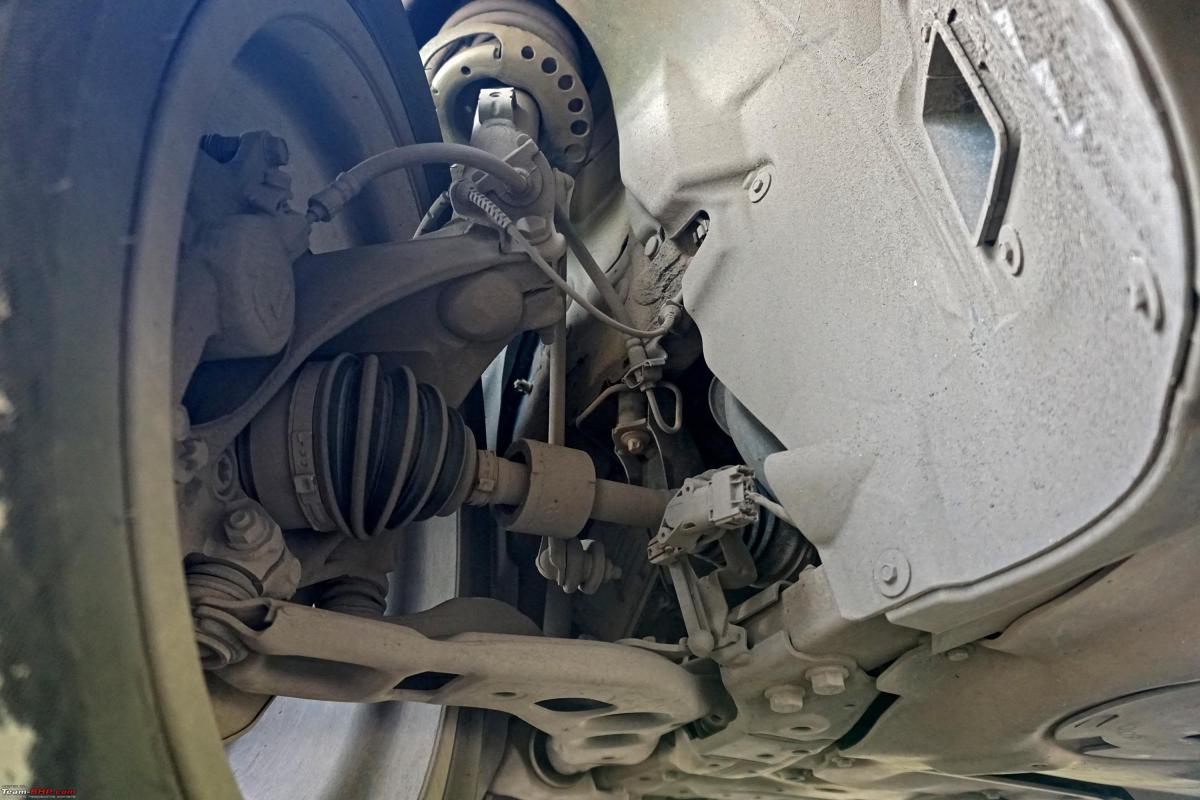
Ride Comfort
The X1’s suspension is compliant. While we wouldn't term it as plush at slow speeds, it's not uncomfortable. We would call it family-friendly. Even so, no bumps are transmitted hard into the cabin. In typical European car fashion, as the speed increases, the ride gets better. Even larger bumps are tackled with aplomb. The suspension works silently too.
Handling & Dynamics
As expected from a BMW, the X1's straight-line stability is excellent. Occupants won't even know that the car is cruising at triple-digit speeds. It never loses composure over expansion joints at expressway speeds.
The X1, despite shifting to front-wheel drive, handles like a BMW should - i.e. beautifully. On sweeping curves, the car holds its line very well. Push it hard on twisty roads and the car changes direction without drama. There is very little body roll. Our test car came with 225/55 R18 Bridgestone Turanza tyres, which provided enough grip for the power on tap.
Steering
The X1 gets an electric power steering, which is very user-friendly. It's light in the city and most owners will appreciate that. The light steering and automatic transmission make the car very easy to drive in the city. At higher speeds, the steering weighs up well. There's no nervous feeling or twitchiness at all while cruising on the highways.
On twisty roads, the steering feels very accurate. However, there is a lack of feedback from it compared to some other BMWs that we have driven.
Braking
The X1 is equipped with disc brakes at the front and rear. The performance is strong and the car comes to a halt without any drama. Under hard braking too, the car doesn't lose its composure. BMW has equipped the X1 with Cornering Brake Control.
Continue reading the discussion on the BMW X1 on our forum.
- Tags:
- Indian
- BMW
- Launches & Updates
- BMW X1
- Review



